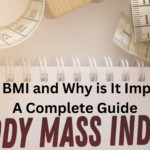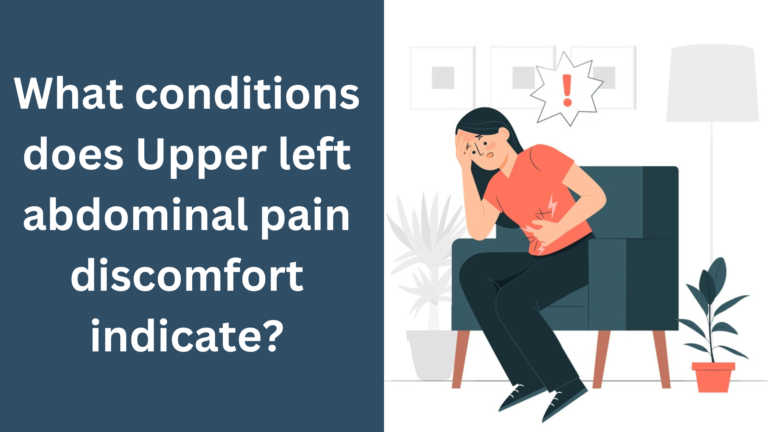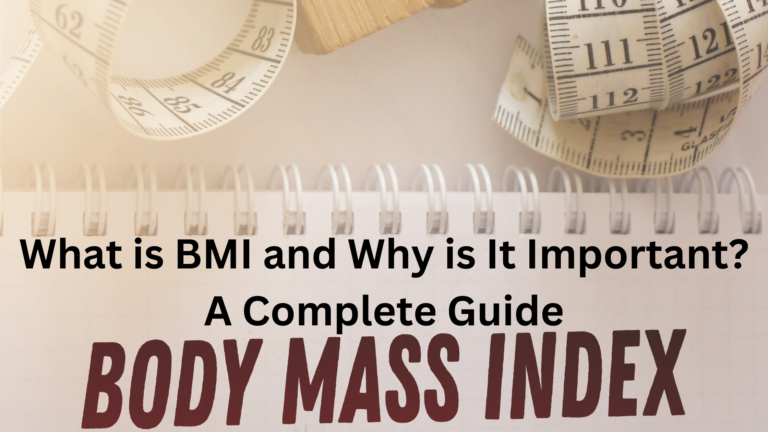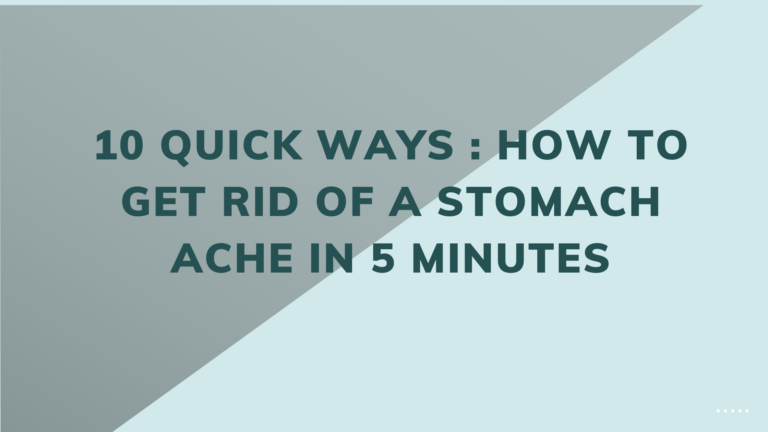Abdominal pain is one of the most common health complaints people experience. While discomfort in the abdomen can range from mild to severe, pinpointing the exact location is crucial for understanding its cause. In particular, Upper left abdominal pain can stem from various conditions affecting the organs and structures in that area. Let’s dive deeper to understand what Upper left abdominal pain is, its causes, symptoms, and solutions.
What Is Upper left abdominal pain?
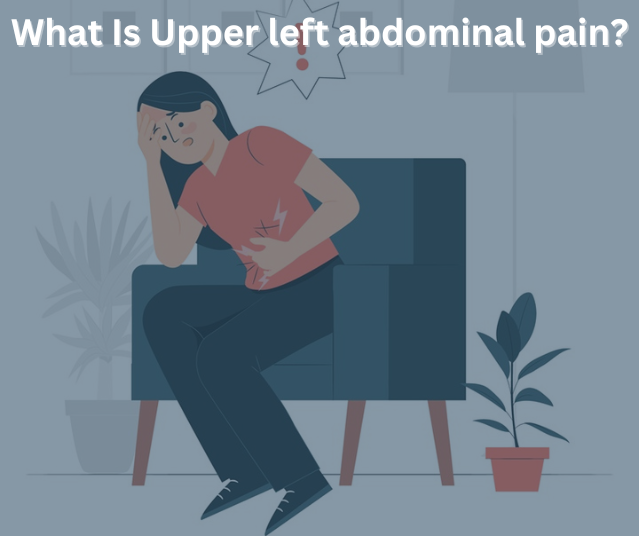
Upper left abdominal pain refers to discomfort or distress located in the left upper quadrant of the abdomen. This region houses several vital organs, including part of the stomach, pancreas, spleen, kidney, and portions of the colon. Pain in this area can vary in intensity, duration, and underlying cause. While some causes are benign, others may signal a more serious condition requiring immediate medical attention.
The region of your belly that lies approximately between your ribs and your belly button is known as your upper abdomen. To help identify the numerous potential causes of abdominal discomfort, medical professionals segment the abdomen into different sections. The organs in that area are more likely to be the cause of your upper abdominal pain. It might be a stomachache, literally. Your muscles or even your biliary system may be affected.
Read More : How to Get Rid of a Stomach Ache in 5 Minutes
Types of Abdominal Pain
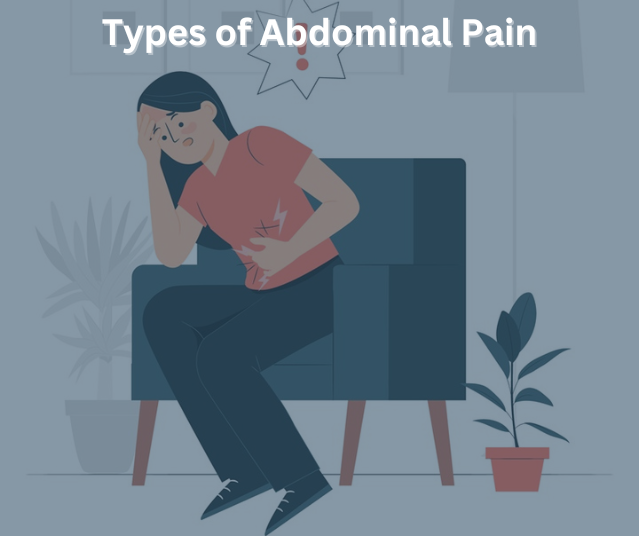
Your doctor will attempt to pinpoint the exact location of the discomfort after you have identified it in your upper abdomen. For instance, they may inquire as to whether your pain is in your:
- upper left. Your sternum divides the right quadrant from the top left. Your stomach is located here. On the far left lies your spleen, and beyond it is your pancreas.
- top right. Most of your biliary system, including your gallbladder on the far right, half of your pancreas, and the majority of your liver and bile ducts, are located in your upper right quadrant.
- upper middle. In the center of your upper abdomen is where your pancreas, stomach, and liver meet. This is referred to as the epigastric area by medical professionals. Your digestive or biliary systems may be the cause of your epigastric pain.
You can also be asked to describe the kind of discomfort you experience by your healthcare provider. They could inquire if it feels:
- Mild, moderate or severe.
- Dull or sharp.
- Widespread or pinpointed.
- Burning or gnawing.
- Achy or crampy.
- Steady, progressive or colicky (occurring in waves).
If you experience recurrent episodes of the same discomfort during specific times or situations, you should also let them know. For instance, you might experience it more:
- After eating.
- After lying down.
- When you bend over.
- When you lift something.
Indications of stomach pain on the upper left side
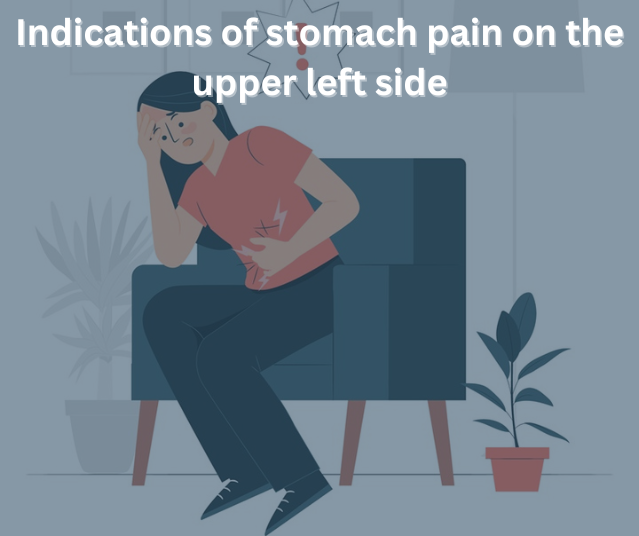
There may be considerable pain in the Upper left abdominal pain. Although there are many possible causes, stomach disorders or disorders affecting the internal organs in that region are the most common.
Upper left abdomen discomfort symptoms can include:
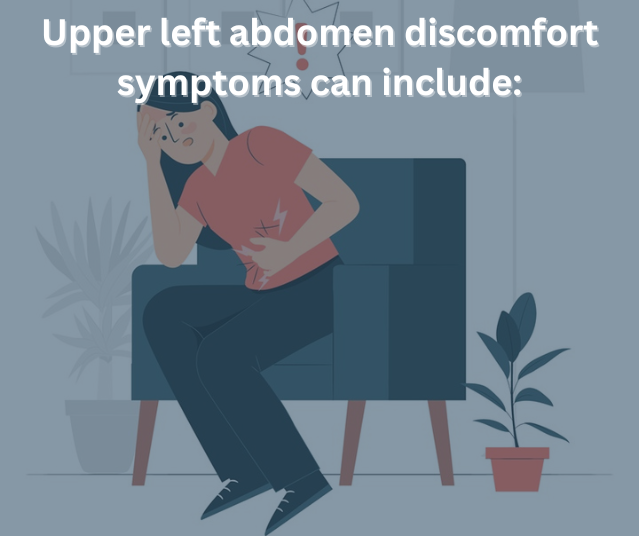
sensitivity in the area of your left rib cage
A burning sensation in the chest
A sharp pain beneath the left rib cage
Having trouble lying down
Common Causes of Upper left abdominal pain
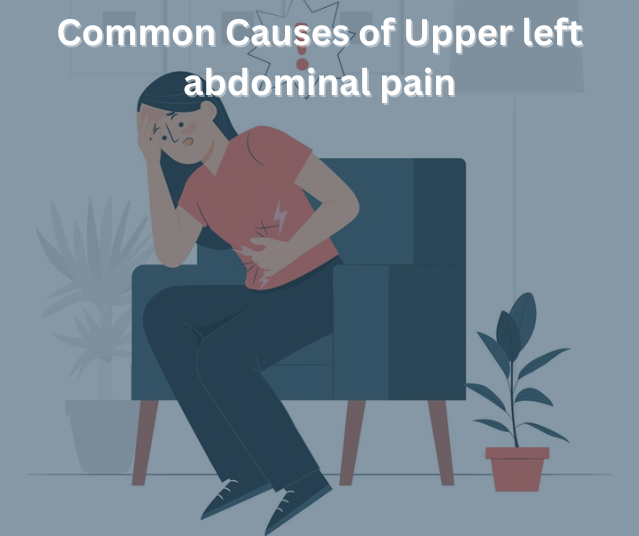
Digestive System Causes
- Acid Reflux and GERD
Acid reflux occurs when stomach acid flows back into the esophagus, causing a burning sensation in the chest and upper abdomen. GERD, a chronic form of acid reflux, often leads to persistent Upper left abdominal pain.
Gastroesophageal reflux disease (GERD) can trigger discomfort in the upper abdomen. This occurs when stomach acid backs up into the esophagus, causing heartburn, regurgitation, and chest pain.
- Gastritis or Stomach Ulcers
Gastritis, or inflammation of the stomach lining, can result from infections, medications, or excessive alcohol use. It often presents as a dull ache in the upper left quadrant.
Gastritis occurs when the stomach lining becomes inflamed, often due to infection, stress, or excessive alcohol. Stomach ulcers, a related condition, result from open sores forming in the stomach lining. Symptoms include burning pain, nausea, and bloating. Peptic ulcers, sometimes referred to as stomach ulcers, are open sores on the stomach lining that can occasionally cause no symptoms at all but instead produce a burning or gnawing sensation in a particular location of the stomach.
It occurs when there is injury to the stomach lining. Patients who take NSAIDs (nonsteroidal anti-inflammatory medicines), such aspirin or ibuprofen, over an extended period of time are more likely to develop stomach ulcers. Bacterial infections like H. pylori can also result in these ulcers. If stomach ulcers are left untreated for an extended length of time, they may worsen.
- Pancreatitis
Inflammation of the pancreas can cause severe, sharp pain that radiates from the Upper left abdominal pain to the back. Pancreatitis is often linked to alcohol abuse or gallstones.
The pancreas, located in the upper abdomen, can become inflamed, leading to pancreatitis. This condition is often caused by gallstones or excessive alcohol consumption. Symptoms include sharp, radiating pain, nausea, and fever.
Musculoskeletal Issues
- Strained Muscles
Overuse or injury to abdominal or intercostal muscles can result in Upper left abdominal pain. - Rib Injuries
Broken or bruised ribs may cause persistent discomfort or sharp pain in this area, especially during movement or deep breathing.
Your Upper left abdominal pain ache under the ribs may be caused by rib injuries, which occur when the chest is traumatized. When breathing or moving, a person with fractured or bruised ribs will experience agony. You will be able to feel a rib injury even when you cannot see one.
Most of the time, bruised ribs recover in one to three months and only need to be rested. Broken ribs can be more difficult to treat. When a rib is shattered, the surrounding organs could be punctured. If you think you could have a bruised or broken rib, consult your physician. If the rib damage results in dyspnea or a feeling of fainting, get assessed at a hospital emergency room.
Cardiovascular-Related Causes
- Heart Attack
While heart attack pain is typically associated with the chest, it can radiate to the Upper left abdominal pain, jaw, or arm. - Pericarditis
Inflammation of the pericardium, the sac surrounding the heart, can mimic abdominal pain and cause discomfort in the upper left quadrant.
Pericarditis is a heart ailment. It is the inflammation of the pericardium, the sac-like tissue that envelops the heart.
Usually, a tiny amount of fluid maintains the separation of the tissue layers. When the pericardial layers irritate and rub against one another, patients experience agony. The majority of patients have chest pain that is sharp or stabbing, though there are other types of discomfort as well.
Pericarditis is frequently caused by viral infections. Scleroderma, rheumatoid arthritis, and lupus are further reasons. If left untreated, pericarditis can recur and manifest as either acute (lasting four to six weeks) or chronic (lasting more than three months).
Spleen-Related Issues
- Enlarged Spleen (Splenomegaly)
Conditions such as infections or blood disorders can enlarge the spleen, leading to discomfort or a feeling of fullness in the Upper left abdominal pain. - Ruptured Spleen
Trauma to the spleen can result in severe pain and internal bleeding, a medical emergency.
Respiratory-Related Causes
- Pneumonia
Infection of the left lung can irritate the diaphragm, causing referred pain in the upper left abdomen. - Pleurisy
Inflammation of the lining around the lungs can also result in upper abdominal discomfort, especially during deep breaths or coughing.
Symptoms Associated with Upper Left Abdominal Pain
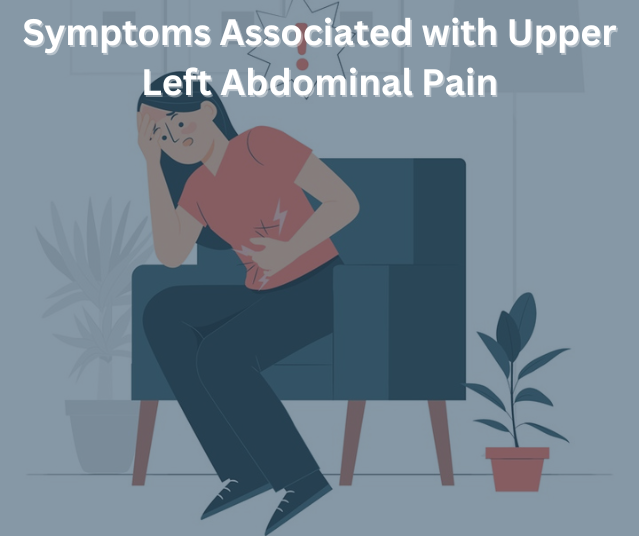
Digestive Symptoms
- Nausea and vomiting are common with digestive-related pain.
- Bloating and indigestion often accompany conditions like gastritis or acid reflux.
Systemic Symptoms
- Fever may indicate an infection such as pneumonia or peritonitis.
- Fatigue can accompany conditions like splenomegaly or pancreatitis.
Severe Symptoms Indicating Emergencies
- Sudden sharp pain may suggest a ruptured spleen or heart attack.
- Difficulty breathing or chest tightness should never be ignored.
Diagnosis of Upper left abdominal pain
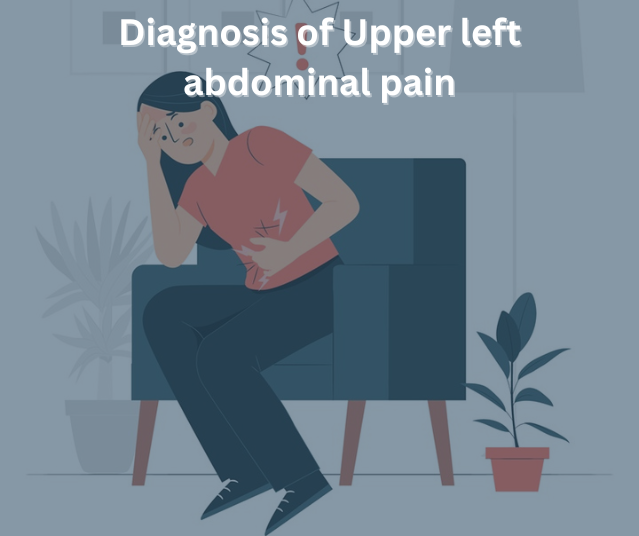
Medical History and Physical Examination
Doctors start by asking about symptoms, duration, and lifestyle factors to narrow down possible causes. A thorough physical examination helps pinpoint the source of the pain.
Diagnostic Tests and Imaging
- Blood Tests: Help detect infections, inflammation, or organ dysfunction.
- Ultrasounds and CT Scans: Provide detailed images of abdominal structures, identifying abnormalities like organ enlargement or injury.
Treatment Options for Upper left abdominal pain
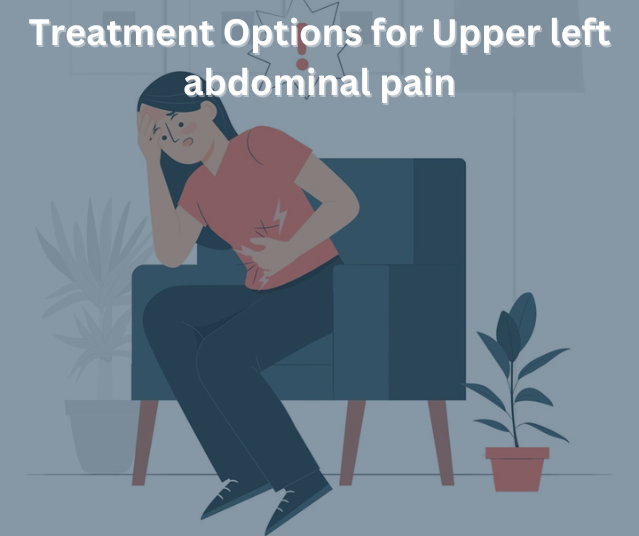
Home Remedies and Lifestyle Adjustments
- Diet Changes: Avoiding spicy, fatty, or acidic foods can reduce pain caused by gastritis or acid reflux.
- Stress Management: Practicing mindfulness or yoga can alleviate pain exacerbated by tension or muscle strain.
Medical Treatments
- Medications: Antacids, antibiotics, or anti-inflammatory drugs are often prescribed based on the diagnosis.
- Surgical Interventions: Conditions like ruptured spleen or severe pancreatitis may require surgery.
Preventive Measures for Upper left abdominal pain
- Healthy Eating Habits: Consuming a balanced diet can prevent issues like acid reflux and gastritis.
- Regular Exercise and Posture Care: Staying active and maintaining good posture can reduce musculoskeletal pain.
How to Alleviate the Pain
- Maintain a Healthy Diet
Avoiding spicy, acidic, or fatty foods can reduce irritation and help alleviate pain caused by gastritis or acid reflux. - Stay Hydrated
Proper hydration aids in digestion and can ease symptoms caused by kidney stones or digestive disorders. - Use Medications Cautiously
Over-the-counter antacids or prescribed medications may offer relief for conditions like GERD or gastritis. Always consult a healthcare provider before starting new treatments.
Care and Treatment of Upper left abdominal pain
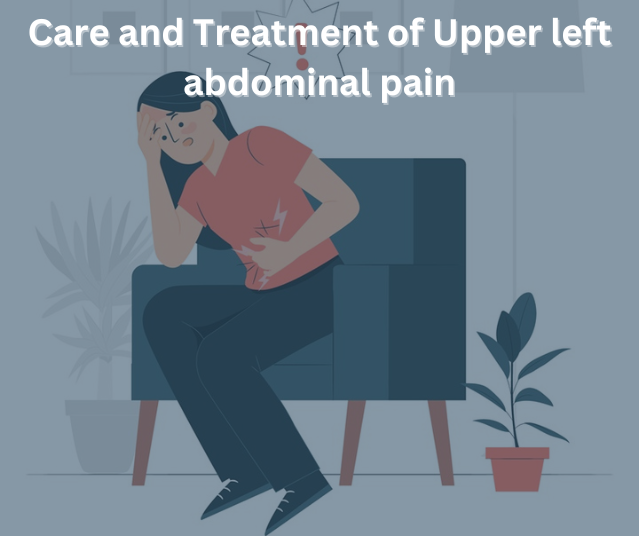
How can I get rid of pain in my upper abdomen?
It is not always possible to cure upper abdominal pain at home. OTC (over-the-counter) antacids can help relieve what appears to be a straightforward case of indigestion. NSAIDs (nonsteroidal anti-inflammatory medicines) like ibuprofen or aspirin may be helpful for general pain and inflammation. However, these aren’t long-term fixes for chronic pain. You should consult a healthcare professional if you require pain relief frequently or if it isn’t functioning well enough.
How do medical professionals handle pain in the upper abdomen?
A medical professional will evaluate you physically and inquire about your medical history. To determine the exact reason for your upper abdominal pain, they might also do testing. These could include blood tests that look for inflammation and infections, as well as imaging studies of your tissues and organs. Based on their diagnosis, they will present you with a course of treatment.
Which conditions are warning of Upper left abdominal pain?
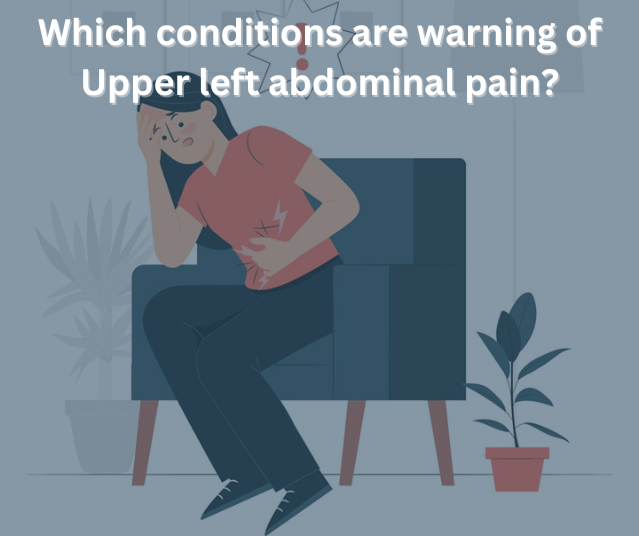
Experiencing pain in the Upper left abdominal pain can be alarming, especially since this region contains multiple vital organs. Whether the pain is mild or severe, it’s often a warning sign of an underlying condition that requires attention. Understanding the potential causes can help you take the right steps toward a diagnosis and treatment.
There are many different ways that abdominal pain can appear, including localized pain that is restricted to a single area. For example, left-sided stomach discomfort is very common and often sought online, indicating that it occurs regularly. The root reasons for this kind of discomfort range widely from minor health problems to potentially serious illnesses. Therefore, it is crucial to pay close attention to and evaluate left abdominal pain as soon as possible.
Which organs are located on the left abdomen?
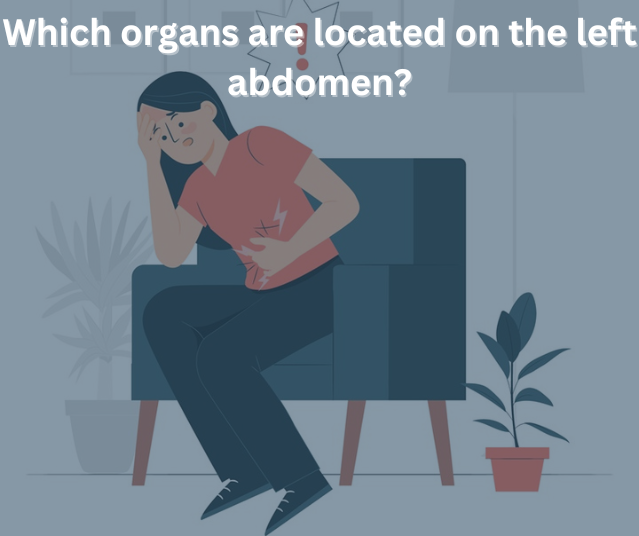
Knowing which organs are located on the left side of the abdomen is essential for an accurate diagnosis since it helps identify possible causes of pain.
The organs in the left abdomen are arranged as follows:
The stomach, pancreas, spleen, left lobe of the liver, and left side of the colon are all included in the Upper left abdominal pain.
Lower Left Abdominal Pain : The ureter, uterus, small and large intestines, and left ovary (in females) are located in the Lower Left Abdominal Pain.
Pain may originate from a variety of sources and appear in different parts of the left abdomen because the left side houses several internal organs. For a thorough and precise diagnosis, speaking with a qualified doctor is also essential.
What causes Upper left abdominal pain?
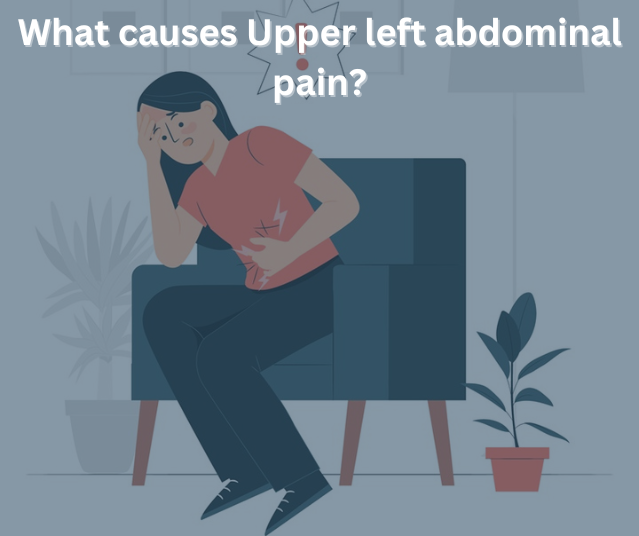
Infections, problems with the female reproductive system, and digestive disorders are the three main causes of abdominal pain. There are several reasons for left-sided stomach pain, including the following:
The digestive system
Indigestion, high stomach acid, constipation, diarrhea, food allergies, or food poisoning are some of the possible reasons for abdominal pain associated with food consumption.
Infection
Infections or irritation of internal organs, such as diverticulitis, viral gastroenteritis, and urinary tract infections, can also cause abdominal pain.
The reproductive system of women
Menstrual cramps and ovulation pain are two examples of pain that comes from the female reproductive system.
It is usually possible to treat and get rid of these somewhat frequent, mild pain issues in a short amount of time.
When these symptoms appear, consult a physician
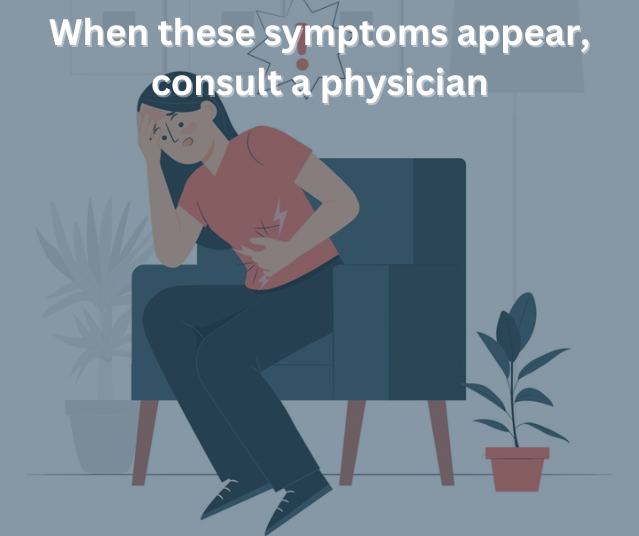
Sometimes, left-sided stomach pain is a sign of more significant medical issues that need to be treated right once.
The following are the main medical problems that might cause left abdominal pain:
Pancreatitis: Severe left upper abdomen pain that frequently radiates to the back can be caused by pancreatic inflammation.
Pancreatic cancer: Fatigue, appetite loss, weight loss, dark urine, and pale stools along with abdominal pain
Splenomegaly: Early satiety is accompanied by pain or discomfort on the left side of the abdomen.
Gastritis: Upper abdominal pain, tightness, and colic are symptoms. Pain in the abdomen may occur prior to or following a meal.
Depending on the disease’s stage, stomach cancer symptoms can resemble those of gastritis.
Kidney infection: Dysuria and frequent urination combined with flank and abdominal pain.
Pain in the belly or on either side of the back is a sign of kidney stones. Intermittent squeezing may accompany pain that spreads to the groin.
Diverticulitis: Infection or inflammation of the tiny pouches that develop along the colon’s walls.
Endometriosis: This disorder may result in pelvic floor pain.
Lower back and abdominal pain may result from the rupture of an ovarian cyst.
Ectopic pregnancy: A pregnancy that develops in an organ other than the uterus, like the ovary or fallopian tube.
Pelvic inflammatory disease: Unusual discharge and pelvic floor pain. The circumstances may be accompanied by fever.
In addition to strange tumors, ovarian cancer symptoms include indigestion, gas, abdominal pain, and discomfort in the abdominal cavity.
Although the aforementioned issues may be diagnostic factors, it is important to understand that symptoms can differ from person to person and may change as the disease worsens. For a thorough diagnosis, it is therefore highly advised to consult a healthcare professional.
Being aware of the discomfort is crucial since ignoring it can eventually make it worse. For the best results, medical care and early action are essential.
Common inquiries concerning pain in the Upper left abdominal pain
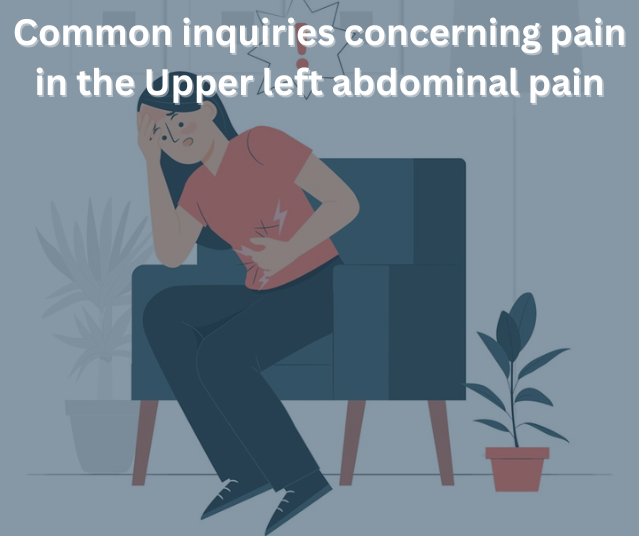
Why am I experiencing pain beneath my ribs in my upper left abdomen?
An injured rib, an enlarged spleen, diverticulitis, colitis, pneumonia, pleural effusion, pleurisy, kidney stone, kidney infection, shingles rash, ovarian cysts, pelvic inflammatory disease, pregnancy, a heart attack, and angina are some of the conditions that can cause pain on the Upper left abdominal pain.
When should I be concerned about soreness beneath my ribcage on the left side?
If your Upper left abdominal pain is accompanied by symptoms like unintended weight loss or appetite loss, fever, nausea, vomiting, blood in the stool, black and tarry stools, jaundice (yellowing of the skin), skin rash, feeling like passing out, difficulty swallowing that gets worse, shortness of breath, chest pain, or weakness or fatigue, call your doctor or visit the emergency room.
Why does my stomach feel like it’s burning at the top part?
Indigestion, acid reflux, esophagitis, gastritis, H. pylori infection, ulcers, irritable bowel syndrome (IBS), stomach cancer, hernia, food intolerances, smoking, alcohol consumption, and some medications are among the numerous disorders that can cause burning in the upper abdomen.
What is a burning feeling of woman pain in upper left side of stomach?
Pregnancy, pelvic inflammatory disease (PID), or ovarian cysts can all cause woman pain in upper left side of stomach that is specific to women. When ovarian cysts become large enough or burst, they can cause excruciating discomfort. PID may result in burning when peeing or lower abdomen pain, occasionally on the left side. When the fetus presses on the abdomen region during pregnancy, a woman may suffer upper abdominal pain. However, if the pain persists and becomes severe, it may indicate a major issue that your doctor needs to look into. However, burning in the upper abdomen is not typically a symptom of PID, pregnancy, or ovarian cysts.
Watch Youtube Video For additional guidance:
Conclusion of Upper left abdominal pain
Upper left abdominal pain can signal various conditions ranging from mild to severe. Identifying the underlying cause is crucial for effective treatment. If the pain persists or intensifies, seek professional medical advice promptly. Taking proactive steps to address symptoms can significantly improve overall health and well-being.



